购物车
全部删除  您的购物车当前为空
您的购物车当前为空
别名 Ubiquitin-binding protein p62, SQSTM, Sequestosome-1, phosphotyrosine-independent ligand for the Lck SH2 domain of 62 kDa, p60), OSIL, ORCA, EBI3-associated protein of 60 kDa(EBIAP
Anti-Sequestosome-1 Antibody (4X151) 是一种 Mouse 抗体,靶向 Sequestosome-1。Anti-Sequestosome-1 Antibody (4X151) 可用于 FCM,ICC,IHC。
Anti-Sequestosome-1 Antibody (4X151) 是一种 Mouse 抗体,靶向 Sequestosome-1。Anti-Sequestosome-1 Antibody (4X151) 可用于 FCM,ICC,IHC。
| 规格 | 价格 | 库存 | 数量 |
|---|---|---|---|
| 50 μL | ¥ 1,990 | 5日内发货 | |
| 100 μL | ¥ 2,995 | 5日内发货 |
| 产品描述 | Anti-Sequestosome-1 Antibody (4X151) is a Mouse antibody targeting Sequestosome-1. Anti-Sequestosome-1 Antibody (4X151) can be used in FCM,ICC,IHC. |
| 别名 | Ubiquitin-binding protein p62, SQSTM, Sequestosome-1, phosphotyrosine-independent ligand for the Lck SH2 domain of 62 kDa, p60), OSIL, ORCA, EBI3-associated protein of 60 kDa(EBIAP |
| 克隆号 | 4X151 |
| 交叉反应 | Human,Mouse,Rat |
| 验证活性 | 1. Western blot analysis of SQSTM1 on different cell lysates using anti-SQSTM1 antibody at 1/500 dilution. Positive control: Lane1: Hela, Lane2: HepG2. 2. Immunohistochemical analysis of paraffin-embedded mouse spleen tissue using anti-SQSTM1 antibody. Counter stained with hematoxylin. 3. Immunohistochemical analysis of paraffin-embedded mouse prostate tissue using anti-SQSTM1 antibody. Counter stained with hematoxylin. 4. Immunohistochemical analysis of paraffin-embedded mouse pancreas tissue using anti-SQSTM1 antibody. Counter stained with hematoxylin. 5. ICC staining SQSTM1 in HepG2 cells (red). Cells were fixed in paraformaldehyde, permeabilised with 0.25% Triton X100/PBS. 6. Flow cytometric analysis of Hela?cells with SQSTM1 antibody at 1/50 dilution (blue) compared with an unlabelled control (cells without incubation with primary antibody; red). Goat anti mouse IgG (FITC) was used as the secondary antibody. 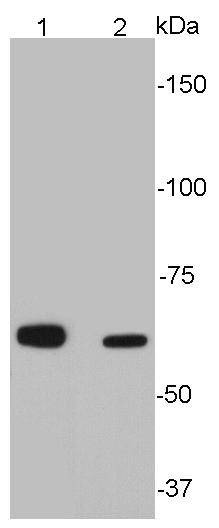  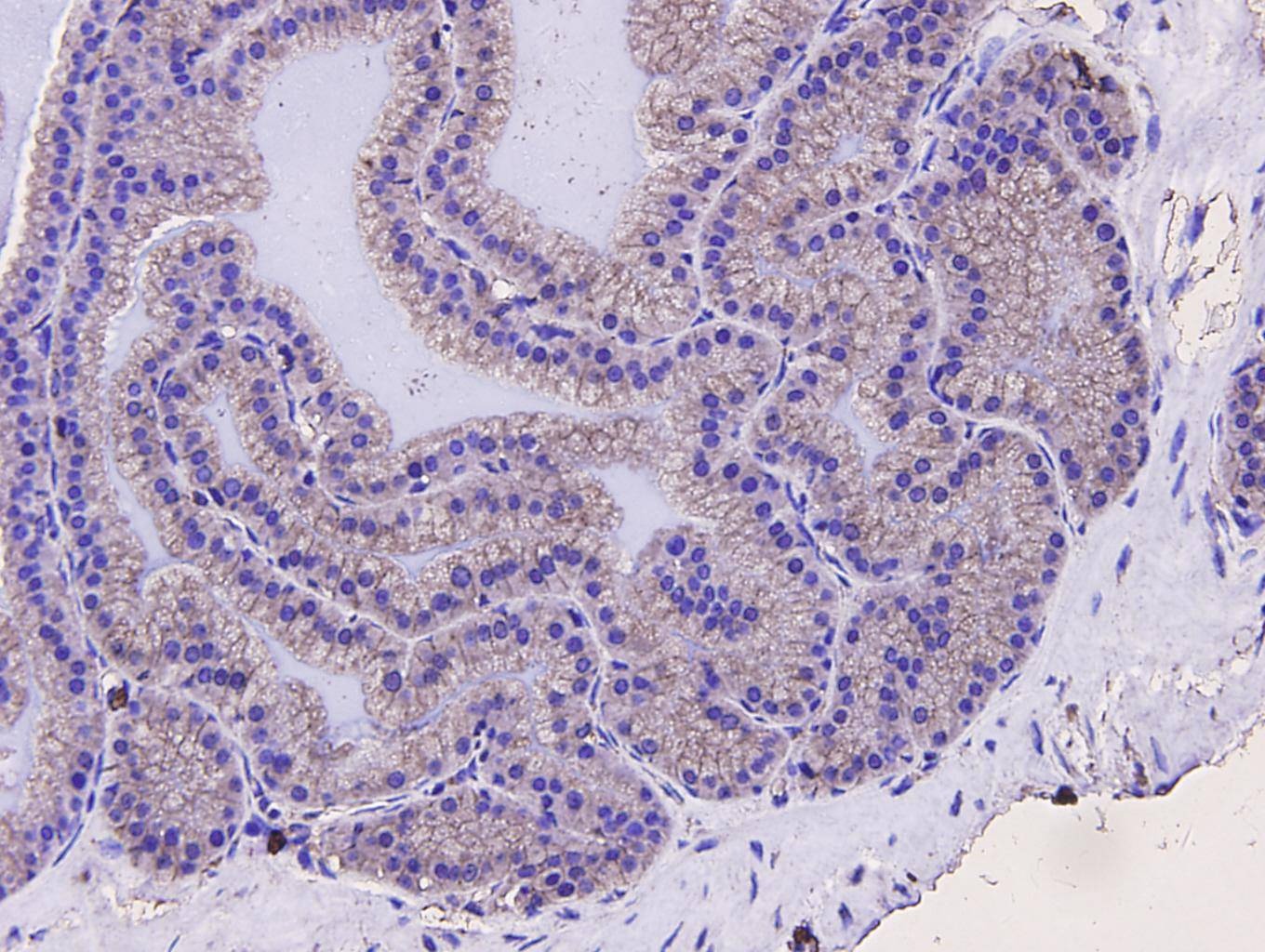 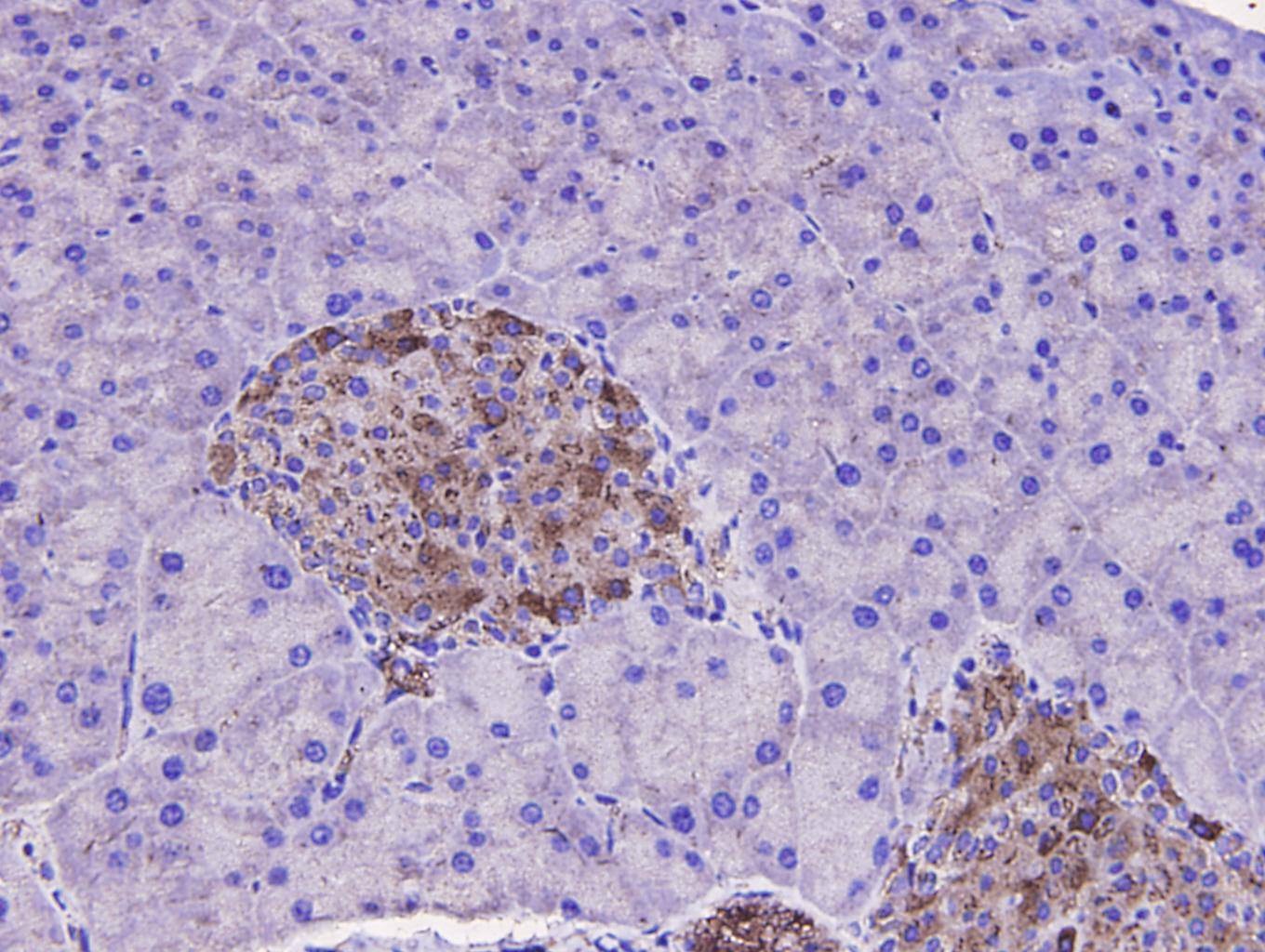 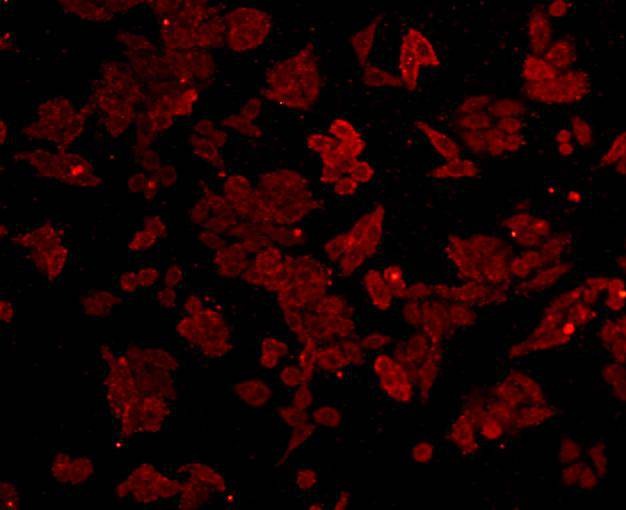 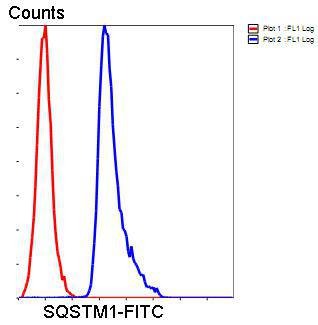 |
| 应用 | FCMICC,IHC |
| 推荐剂量 | WB: 1:500-1000; IHC: 1:200; ICC: 1:200; FCM: 1 μg per 1 x 106 cells |
| 抗体种类 | Monoclonal |
| 宿主来源 | Mouse |
| 构建方式 | Hybridoma Monoclonal Antibody |
| 纯化方式 | Peptide affinity purified. |
| 性状 | Liquid |
| 缓冲液 | 1*TBS (pH7.4), 1%BSA, 40%Glycerol. Preservative: 0.05% Sodium Azide. |
| 研究背景 | Sequestosome 1 (SQSTM1, p62) is a ubiquitin binding protein involved in cell signaling, oxidative stress and autophagy. It was first identified as a protein that binds to the SH2 domain of p56Lck and independently found to interact with PKCζ. SQSTM1 was subsequently found to interact with ubiquitin, providing a scaffold for several signaling proteins and triggering degradation of proteins through the proteasome or lysosome. Interaction between SQSTM1 and TRAF6 leads to the K63-linked polyubiquitination of TRAF6 and subsequent activation of the NF-κB pathway. It may play a role in titin/TTN downstream signaling in muscle cells and regulate signaling cascades through ubiquitination. P62 may be involved in cell differentiation, apoptosis, immune response and regulation of K+ channels. |
| 偶联 | Unconjugated |
| 免疫原 | KLH conjugated synthetic peptide: within human SQSTM1 40-100 aa |
| 抗原种属 | human |
| Uniprot ID |
| 分子量 | Theoretical: 62 kDa. |
| 储存方式 | Store at -20°C or -80°C for 12 months. Avoid repeated freeze-thaw cycles. |
| 运输方式 | Shipping with blue ice. |
评论内容